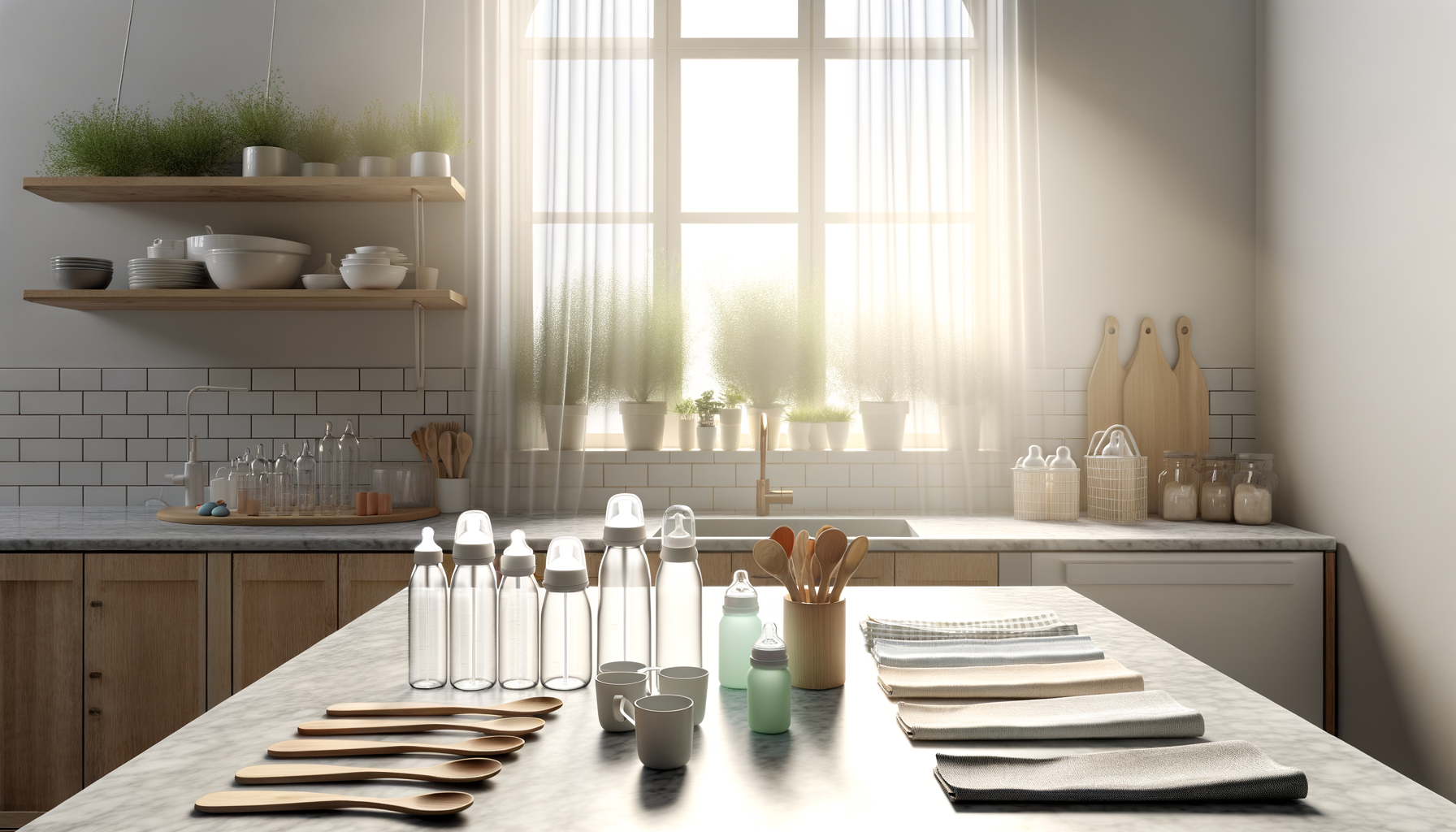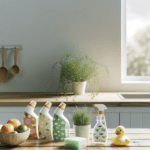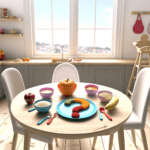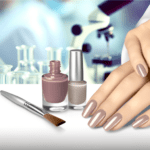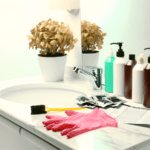Introduction
Understanding the Importance of Non-Toxic Baby Bottles and Feeding Accessories
For new and expectant parents, the health and safety of their little ones are paramount. When it comes to feeding, the bottles and accessories chosen are not just vessels for nutrition; they are also potential sources of harmful chemicals. Non-toxic baby bottles and feeding accessories are essential to prevent the ingestion of substances that could interfere with a baby’s development and long-term well-being. With the alarming revelation that infants could consume millions of plastic particles daily, the urgency to select safe, non-toxic options becomes clear. Parents must be vigilant, as even BPA-free plastics may contain harmful substitutes like BPS, and certain glass bottles have been found with lead contamination on their exteriors.
The Connection Between Baby Products and Long-Term Health
The materials used in baby products can have a profound impact on long-term health. Endocrine disruptors, commonly found in various plastics, can interfere with hormone function and potentially lead to developmental concerns. The choice of baby bottles and feeding accessories, therefore, is not just about immediate safety but also about safeguarding the child’s future health. By choosing non-toxic materials such as clear, unmarked glass, food-grade stainless steel, or medical-grade silicone, parents can reduce the risk of chemical exposure that could have lasting effects.
Overview of the Article’s Purpose and Structure
This article aims to empower parents with knowledge and practical advice on selecting non-toxic baby bottles and feeding accessories. We will explore the risks associated with toxic materials in baby products, identify safe materials, and provide practical tips for choosing the best options for your child. Additionally, we will discuss how to select safe feeding accessories and the importance of lifestyle considerations for a chemical-free upbringing. Our goal is to provide a comprehensive guide that not only informs but also supports parents in making informed decisions for the health and happiness of their children.
The Risks of Toxic Materials in Baby Products
Common Toxic Chemicals Found in Baby Bottles and Accessories
When it comes to the safety of baby bottles and feeding accessories, understanding the materials used in their manufacture is crucial. Common toxic chemicals that have been found in baby products include Bisphenol A (BPA), phthalates, polyvinyl chloride (PVC), lead, and cadmium. BPA is often used in the production of polycarbonate plastics and epoxy resins, which can be found in some plastic bottles and sippy cups. Phthalates are used to soften PVC, making it more flexible, and can be found in teething rings and soft toys. Lead and cadmium may be present in painted decorations on glass bottles or in certain metal components.
Potential Health Impacts of Exposure to Endocrine Disruptors
Many of these chemicals are classified as endocrine disruptors, which means they can interfere with the body’s hormone systems. Endocrine disruptors can mimic, block, or alter hormones and disrupt the body’s normal functions. This can lead to a variety of health issues, including developmental, reproductive, neurological, and immune problems. Infants and young children are particularly vulnerable to these effects due to their developing bodies and the potential for higher exposure relative to their body weight.
The Link Between Chemicals and Developmental Concerns
Exposure to toxic chemicals during critical periods of development can have lasting effects. Research has linked exposure to certain chemicals in baby products to developmental concerns such as cognitive delays, behavioral problems, and altered motor skills. The risk is heightened because infants and toddlers often put objects in their mouths, increasing the potential for ingestion of these harmful substances.
Regulations and Standards for Baby Products
Regulatory bodies such as the U.S. Food and Drug Administration (FDA) and the Consumer Product Safety Commission (CPSC) have set standards and regulations to limit the use of certain toxic chemicals in baby products. For instance, the FDA banned the use of BPA in baby bottles and sippy cups. However, not all harmful substances are regulated, and enforcement can vary. It is important for parents to stay informed about the materials used in baby products and to choose items that comply with the highest safety standards.
In conclusion, the presence of toxic materials in baby products is a significant concern due to their potential to cause long-term health issues. Parents and caregivers should be vigilant about the materials used in baby bottles and feeding accessories, understand the risks associated with exposure to endocrine disruptors, and be aware of the link between these chemicals and developmental concerns. It is also essential to be informed about regulations and standards that aim to protect infants from these risks.

Popular Read: Endocrine Disruptors in Skincare: What You Need to Know
Identifying Safe Materials for Baby Bottles and Accessories
Characteristics of Non-Toxic Materials
When it comes to the safety of baby bottles and feeding accessories, non-toxic materials are paramount. Non-toxic materials are those that do not release harmful chemicals into the baby’s food or drink, especially when heated or cooled. These materials should be stable, durable, and free from contaminants like BPA, lead, phthalates, and other endocrine disruptors. They should not degrade over time or with repeated use, ensuring that they do not leach chemicals into the contents of the bottle.
Pros and Cons of Different Non-Toxic Materials
There are several non-toxic materials suitable for baby bottles and accessories, each with its own set of advantages and disadvantages:
- Glass: Glass is inert and does not leach chemicals, making it a safe choice. However, it can be heavy and breakable, posing a risk if dropped.
- Stainless Steel: Food-grade stainless steel is lightweight, unbreakable, and free from harmful chemicals. It can, however, be more expensive and may not be as transparent as glass for measuring contents.
- Silicone: Silicone is soft, lightweight, and resistant to breakage. While generally considered safe, it can leach at very high or low temperatures, so it’s best to avoid extreme temperature changes.
Understanding Labels and Certifications
Labels and certifications can provide assurance of a product’s safety. Look for the following when choosing baby bottles and accessories:
- BPA-Free: Indicates the product does not contain bisphenol A, a harmful chemical found in some plastics.
- Lead-Free: Ensures that there is no lead, which is toxic to the nervous system, especially in children.
- Phthalate-Free: Signifies that the product does not contain phthalates, which are known to disrupt the endocrine system.
- Food-Grade: This label means the material is safe for contact with food and drink.
- ASTM/CPSC Compliant: Compliance with the American Society for Testing and Materials and the Consumer Product Safety Commission indicates that the product meets safety standards.
Understanding these labels and certifications can help you make informed choices about the materials you trust for your baby’s feeding needs.

Do you have the most commonly used but toxic, disease bringing chemicals in your skin care? Many chemicals in skincare are hormone disruptors and make menopause symptoms worse.
Find out more…
Practical Tips for Choosing Non-Toxic Baby Bottles
Factors to Consider When Purchasing Baby Bottles
When selecting a baby bottle, safety should be your top priority. Here are some key factors to consider:
- Material: Opt for bottles made from glass, food-grade stainless steel, or medical-grade silicone. These materials are known for their non-toxic properties and are less likely to leach harmful chemicals.
- Design: Look for bottles that are easy to clean, with as few parts as possible to reduce the risk of bacterial growth.
- Durability: Consider the longevity of the bottle. Stainless steel and silicone are durable and less prone to breakage compared to glass.
- Heat Resistance: Ensure the bottle can withstand high temperatures for sterilization purposes.
- Nipple Material: Choose nipples made from natural rubber or food-grade silicone to avoid synthetic latex, which can contain harmful additives.
How to Read and Understand Product Labels
Understanding product labels is crucial in choosing non-toxic baby bottles:
- BPA-Free: While important, be aware that BPA-free products may contain other harmful chemicals like BPS. It’s best to avoid plastic altogether.
- Phthalate-Free: Phthalates are another class of chemicals to avoid. Look for labels that clearly state the product is phthalate-free.
- Lead-Free: Especially with glass bottles, ensure there is no painted logo or decoration that could contain lead.
- Certifications: Look for certifications from credible organizations that indicate the product has been tested for harmful substances.
Questions to Ask Manufacturers
Don’t hesitate to reach out to manufacturers with questions:
- Is the entire bottle made from non-toxic materials, including any paint or decorations?
- Have the bottles been tested for chemical leaching at various temperatures?
- Can they provide any third-party certifications or test results?
- What is the recommended lifespan of the bottle?
Recommendations for Cleaning and Maintenance
Proper cleaning and maintenance are essential to ensure the safety of baby bottles:
- Cleaning: Use hot, soapy water or a dishwasher if the bottles are dishwasher-safe. Clean each part thoroughly to prevent milk residue build-up.
- Sterilization: Sterilize new bottles before first use and periodically afterward, following the manufacturer’s instructions.
- Inspection: Regularly inspect bottles and nipples for signs of wear and tear, such as cracks or discoloration, and replace them as needed.
- Storage: Store bottles in a clean, dry place to prevent contamination.
By considering these factors, reading labels carefully, asking informed questions, and maintaining a strict cleaning regimen, you can ensure that you’re choosing the safest feeding options for your baby.
Do you know the 3 main ways how your body is exposed to harmful chemicals, which affect your hormones, your thyroid, health and beauty?
If not, it may be time to learn about them. It takes about 1-2 minutes.
We have a few suggestions how to avoid these silent health and immune system killers in our new guide.
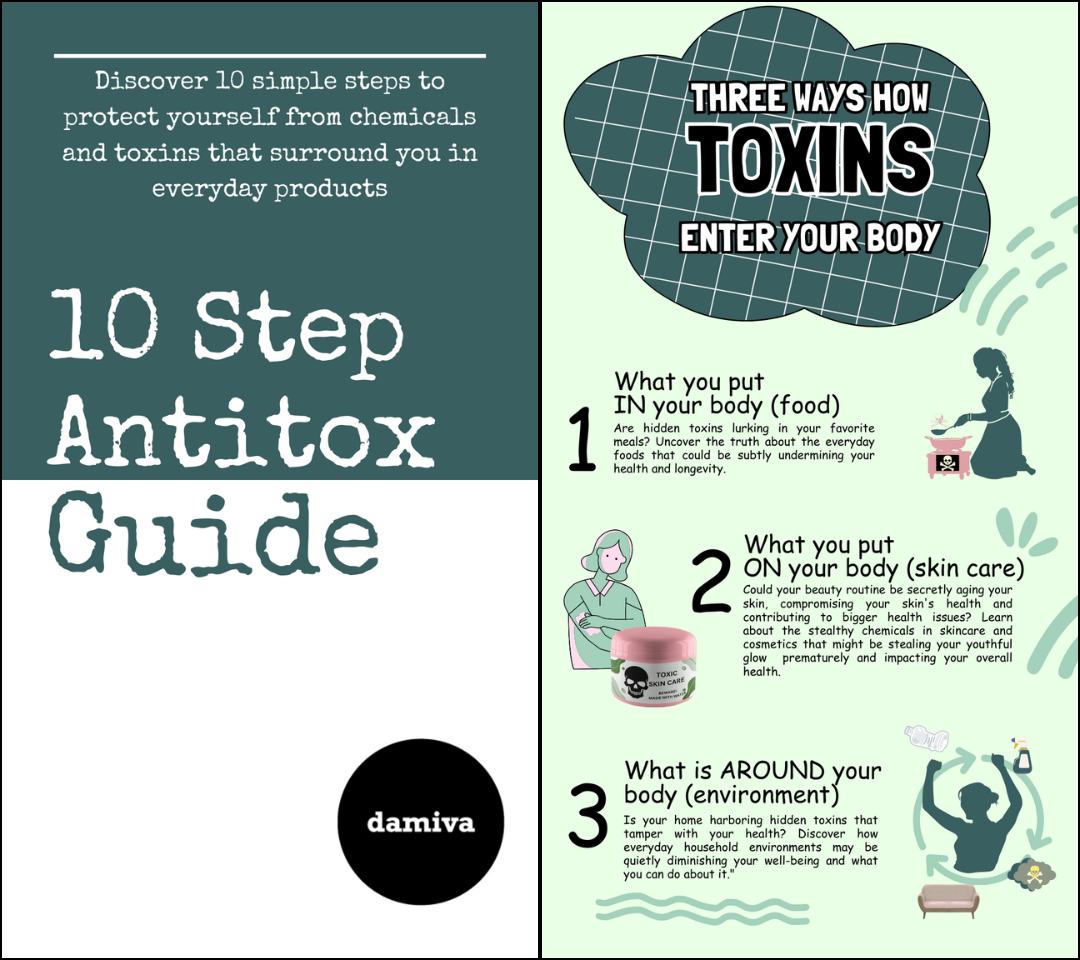
Selecting Safe Feeding Accessories
Non-Toxic Alternatives for Nipples, Pacifiers, and Teethers
When it comes to nipples, pacifiers, and teethers, the safest materials are natural rubber and medical-grade silicone. Natural rubber, like that used by brands such as Natursutten, is a renewable resource and offers a soft, flexible texture that is gentle on a baby’s gums. Medical-grade silicone is also a durable and hygienic option, free from harmful additives found in synthetic latex. It’s crucial to avoid nipples made from synthetic latex, which can contain concerning chemicals.
Choosing Safe Utensils, Plates, and Bowls for Older Infants
As infants grow and begin to use utensils, plates, and bowls, it’s important to continue the commitment to non-toxic materials. Bamboo and stainless steel are excellent choices for utensils, offering both durability and safety. For plates and bowls, stainless steel, bamboo, and silicone are preferable over plastic. Stainless steel spoons with silicone coatings are particularly good for protecting a baby’s delicate mouth. When transitioning to ceramic plates, ensure they are lead-free and non-toxic.
The Importance of BPA-Free and Phthalate-Free Products
BPA (Bisphenol-A) and phthalates are chemicals commonly found in plastics that can disrupt the endocrine system and pose health risks. BPA has been linked to various health issues, including metabolic disorders and fertility problems. Phthalates, often used to make plastics more flexible, have been associated with negative impacts on male reproductive development. Therefore, it is essential to choose products that are explicitly labeled as BPA-free and phthalate-free. However, it’s worth noting that BPA-free does not always mean a product is free from other harmful chemicals. Thus, the safest route is to avoid plastic altogether when possible.
In conclusion, selecting non-toxic feeding accessories is a critical step in safeguarding your child’s health. Opt for natural rubber or medical-grade silicone for nipples, pacifiers, and teethers, and choose bamboo, stainless steel, or silicone for utensils, plates, and bowls. Always prioritize BPA-free and phthalate-free products, but remember that the best option is to avoid plastic when you can. By making informed choices, you can ensure that your child’s feeding experience is safe and healthy.
Lifestyle Considerations for a Chemical-Free Upbringing
Incorporating Organic and Natural Products into Daily Life
Creating a chemical-free environment for your child begins with the choices you make every day. Opting for organic and natural products is a significant step towards reducing your baby’s exposure to harmful chemicals. From clothing and bedding made of organic cotton to toys crafted from untreated wood or natural rubber, these choices can make a significant difference in your child’s health. Additionally, using eco-friendly cleaning products ensures that the surfaces your child comes into contact with are free from toxic residues.
Educating Family Members on Non-Toxic Practices
Ensuring a non-toxic upbringing for your child is a team effort. It’s essential to educate family members about the importance of avoiding toxic chemicals in baby products. Share information on the potential risks associated with certain materials and the benefits of choosing safer alternatives. Encourage them to adopt practices such as washing their hands before handling the baby and avoiding the use of heavily scented lotions or perfumes that could irritate sensitive skin.
Building a Supportive Community for a Healthy Lifestyle
Surrounding yourself with like-minded individuals who prioritize a non-toxic lifestyle can provide invaluable support. Joining parenting groups, both online and in your local community, can offer a platform to share experiences, tips, and recommendations for non-toxic products. Engaging in these communities not only bolsters your knowledge but also reinforces your commitment to providing a safe and healthy environment for your child.
By the way, something for you, a little gift!!!
I am just in the middle of publishing my book. It’s about How women can balance their hormones. One part is about food and diet, of course.
Follow this link and enter your email.
I will send you this part of the book for free once the book is published. It has many concrete, practical tips and recipes and will help you feel better during menopause or times of Big hormonal fluctuations.
Annette, Damiva Lead for Health & Wellness

Conclusion
Summarizing Key Takeaways for Non-Toxic Choices
In the journey to safeguard our children’s health, understanding the significance of non-toxic baby bottles and feeding accessories is paramount. We’ve explored the risks associated with toxic materials like BPA and phthalates, which can leach into our children’s food and beverages, potentially disrupting their endocrine systems and affecting long-term development. The market offers safer alternatives, such as glass, stainless steel, and food-grade silicone, which do not pose the same risks as their plastic counterparts. By choosing products that are free from harmful chemicals, parents can take proactive steps to protect their children’s health and contribute to a more sustainable environment.
Empowering Parents to Make Informed Decisions
Armed with knowledge about the potential dangers of certain materials, parents are better equipped to make informed choices when selecting baby bottles and feeding accessories. It’s essential to look for labels and certifications that indicate a product is free from known toxins. Additionally, understanding the pros and cons of various non-toxic materials can help parents select products that align with their values and lifestyle choices, whether that means prioritizing durability, environmental impact, or ease of cleaning.
Encouraging Continued Education and Advocacy for Safe Baby Products
The conversation about non-toxic baby products does not end with a purchase. It’s an ongoing dialogue that involves staying informed about the latest research, sharing knowledge with other parents, and advocating for stricter regulations and higher safety standards within the industry. By supporting companies that prioritize the health of our children and the planet, and by choosing products that are sustainably produced and packaged, we can collectively push for a market that values safety and transparency above all.
In conclusion, the choices we make today for our children’s feeding accessories have far-reaching implications. By opting for non-toxic materials, we not only protect our children’s health but also contribute to a healthier planet. As parents, caregivers, and consumers, we have the power to drive change and ensure a safer future for all children. Let’s continue to educate ourselves, make informed decisions, and advocate for a world where every child can grow and thrive without the threat of toxic exposure.
